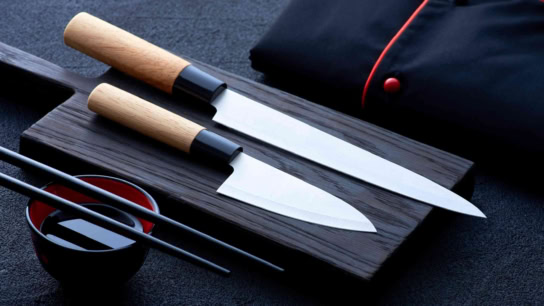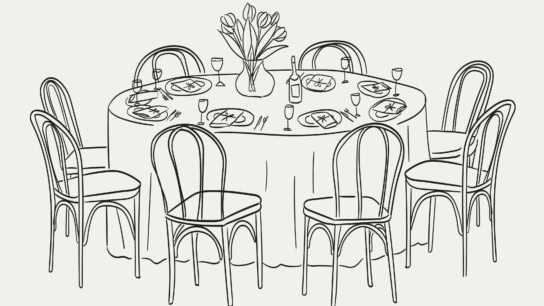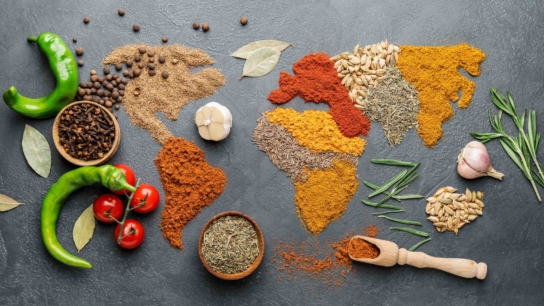All it takes is 5 minutes on Instagram or TikTok to discover that today’s younger generations are increasingly health-conscious—alcohol consumption included. As a result, the best non-alcoholic drinks to order at a bar no longer include basic drinks like the grenadine-ridden Shirley Temple. With movements like “Dry January” and “Sober October” gaining momentum, zero-proof alternatives have become staples in restaurants and bars nationwide.
This new wave of alcohol-free beverages makes the sober and sober-curious lifestyle a lot more accessible and attractive. Many options, like the Phony Negroni, even offer the same sophistication as traditional cocktails.
While researching this topic, I wanted expert insight on what’s really worth ordering. So why not get it from the experts?
I spoke with Rodney Murray, a Philadelphia bartender with nearly 12 years of experience who has watched the zero-proof revolution unfold firsthand.
This guide shares Rodney’s recommendations for the best non-alcoholic drinks to order when you’re out.
Expert’s Guide: The Best Non-Alcoholic Drinks to Order at a Bar
Rodney, I know you trained in the field of traditional alcoholic beverages. So tell me, what are your honest thoughts on mocktails?
I think mocktails and non-alcoholic drinks are amazing. I don’t typically drink them because I enjoy spirited options, but it’s been great to witness how diverse the offerings are becoming. Personally, it’s been fun making nonalcoholic drinks for people because I get to try new products all the time.
What is your advice to our readers who want to enjoy mocktails or zero-proof beverages at home?
Don’t overcomplicate it. Bars and restaurants have different expectations and different opportunities. They create zero-proof cocktails that are sometimes too complex to achieve at home.
With that being said, I like to remind people that a mocktail, zero-proof, or NA drink is any beverage that is delicious and doesn’t have alcohol. Mocktails are not simply cocktails without alcohol. There is an entire range of alcohol-free beverage options.
Exploring Non-Alcoholic Bitter Drinks Options & More
Can you tag about what some of those other options are?
Absolutely. Kombucha, or fermented tea, are great. Not only do they have added health benefits, but they are tangy and delicious. They pair well with a lot of different foods.
Infused waters are another simple option that I consider to be an alcohol-free alternative. Fresh ingredients like seasonal fruits and fresh herbs can be directly infused into water or made into homemade syrups or shrubs, which can be poured into club soda, tonic water, or even ginger beer to make a simple and delicious drink.
I also recommend small additions to simple bases, like freshly steeped iced tea. Think of adding fresh fruit juice, herbs, or jam to your tea next time you steep it. It’s an easy way to enhance the flavor while drinking mindfully.
Have you noticed customers’ alcohol consumption habits shift over the past few years?
Absolutely. The pandemic influenced a lot, and we’re just now starting to see the effects of that.
Being forced inside and shut off from the real world led people to become more conscious of their choices and habits. As a result, mindful drinking and alcohol consumption became an important topic.
The wellness industry at large experienced a boom during the pandemic. Suddenly, there was a huge market for wellness drinks like probiotic sodas, kombucha, and alcohol-free alternatives that still have complexity.
Ready-to-drink canned options like Kin and Recess became popular because their brands are centered around using vitamins and adaptogens, or CBD in the case of Recess. These created delicious beverage options that have fewer calories and are practical and healthy alternatives to alcohol.
A Shift to More Sober Curious Beverage Options in the Restaurant Industry
How has the approach to non-alcoholic beverages in the food and beverage industry evolved?
When I first started in the industry almost 12 years ago, mocktails were virtually non-existent. Even when I moved to Philadelphia in 2017, non-alcoholic options were extremely rare. It wasn’t until restaurants experienced a post-pandemic resurgence in 2021 that mocktails started growing in popularity and necessity.
Now, when I make menus for bars and restaurants, I’m typically required to include spirit-free drinks because the demand is there and it’s a sales opportunity.
There’s also a growing movement in restaurants that offer beverage pairings to create options that highlight non-alcoholic or temperance drinks alongside their tasting menus.
I think this shows that non-alcoholic beverages can be just as complex and unique as wine or cocktails.
How do you suggest our readers should think about pairing non-alcoholic drinks with food?
The first and most important suggestion I can offer is to find something you like.
Consuming mindfully also relates to paying attention to what you like and dislike. So next time you have a mocktail, be considerate as you sip, and try to note all its intricacies.
In terms of pairing, however, non-alcoholic options are relatively easy to pair with food because you don’t have to consider how alcohol content affects flavors.
In fact, a lot of principles around wine pairing apply to all food and beverage pairings. Find complementary flavors, match texture, and use the acidity of beverages to your advantage.
Again, don’t overcomplicate it, just try to enjoy a refreshing drink.
Is the push toward wellness amongst younger generations ushering in a new culture of temperance?
There has been a noticeable impact, but I don’t think it poses a threat to cocktail culture. I think it pushes us to develop more creative approaches to craft flavorful drinks in any category. People are expecting more than just a Shirley Temple and soft drinks, which I think is great.
This demand keeps restaurants, bars, and the beverage industry at large accountable for innovating. Our responsibility is to exceed the demands of our guests. As people become more considerate of their consumption habits, we must be able to address that.
Luckily, this is a time when people are being more explicit about their wants. The demand is for low and no-proof beverage options that have complexity, nuance, and vision.
To me, this is a great opportunity to be able to craft beverages that offer intrigue and depth of flavor.
The Rise of NA Wine, Beer, and Alcohol-Free Spirits Brands
Are there any non-alcAre there any non-alcoholic spirits you recommend?oholic spirits you recommend?
There are so many options, and everyone’s palate is so different, so I suggest buying a few different products and letting your curiosity guide you.
A few brands that are gaining in popularity, however, are Seedlip and Lyre’s. Both are making alternatives to classic spirits like gin, rum, and whiskey that taste like their alcoholic counterparts. These are great because they can be enjoyed simply with a bit of lime juice, lemon juice, or soda water. But they also have enough complexity to hold up in a non-alcoholic version of something classic like a Gin and Tonic, Old Fashioned, or Mojito.
For those who enjoy an Aperol Spritz in the warmer months, Ghia is a botanical-based beverage that has all the bitterness of a classic amaro without the alcohol.
If you like your mocktails to be elevated and have a bit of complexity, I recommend checking out these brands and experimenting.
What about non-alcoholic beer and non-alcoholic wine?
NA beer is always a great option. A few that stand out to me are WellBeing Brewing, which makes a Victory Citrus Wheat beer enriched with electrolytes and vitamins. For traditionalists, however, the Budweiser Zero is a great option that has replicated their classic malty profile.
As for wine, Leitz is a producer who’s really become popular in the past few years. They are based in Germany and make both still and sparkling wines from Riesling and Pinot Noir. I think this is one of the best options on the market for those who want something that tastes as close to wine as possible.
A Norwegian brand called villbrygg, which makes sparkling botanical beverages from organic herbs and produce, in a personal favorite. Their infusions are complex and make for an exceptional pairing alongside food.
What are your final thoughts on this emerging area of mocktails?
Stay curious! Mocktails and beverage offerings are constantly evolving so continue to try new things, expand your palate, and share with friends and loved ones.
Thank you, Rodney, for sharing your expertise and shedding light on the rapidly emerging world of non-alcoholic beverages. We look forward to seeing how your work continues to shape the industry and inspire others.
The Essential Guide to Ordering Non-Alcoholic Drinks at Bars in 2025
For those new to the world of zero-proof alternatives, here are key takeaways from our interview with Rodney about the best non-alcoholic drinks to order at a bar:
- Ask the Bartender: Most skilled bartenders will be happy to create a custom non-alcoholic drink, even if the menu doesn’t offer any options.
- Don’t Be Afraid to Explore: If you’re hosting a party, go the extra mile for your sober guests! Some of the best party drinks that non-alcoholic guests appreciate include house-made sodas, botanical spirits, and infusions.
- Explore NA Bitter Drinks: Dip your toes into the Phony Negroni waters—you’ll be surprised by how complex those non-alcoholic spirit brands are!
- Stock Some NA Beer: Give yourself a healthier option for weeknights and enjoy the benefits of drinking non-alcoholic beer with options from craft brewers.
- Embrace Wellness Drinks: Not every sober curious beverage option has to imitate an alcoholic counterpart. NA beverages include health-forward options like adaptogenic tonics and functional beverages.
If you liked this article, we invite you to continue reading our interview with Toronto, Canada based dietitian Sophia Zheng, RD. In Healthy Feasts: Home Dining Tips from Dietitian Sophia Zheng, RD we explore more ways to raise your culinary and beverage experience!













